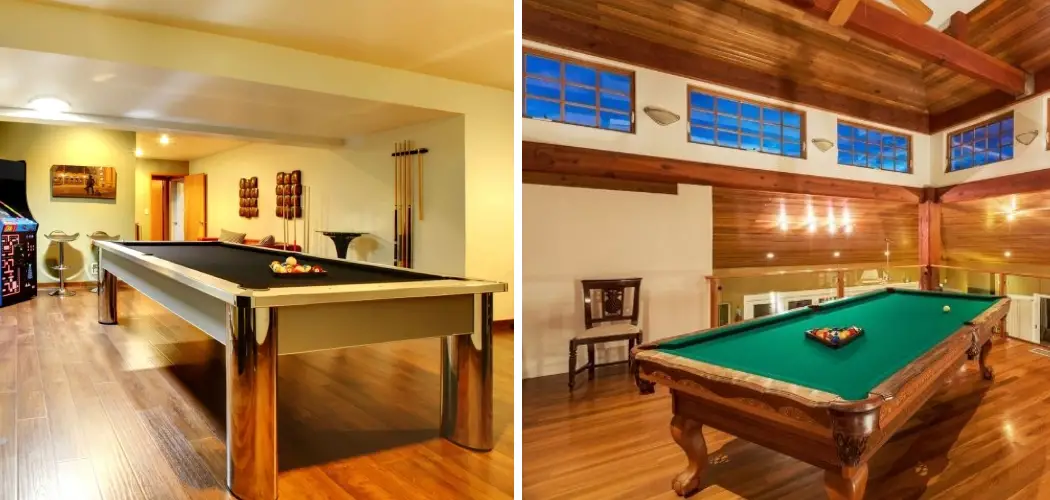If you’ve decided to temporarily store or relocate your pool table, careful and precise steps are vital to ensure its safety and preservation. A pool table is a substantial investment and a piece of furniture that demands proper handling and storage.
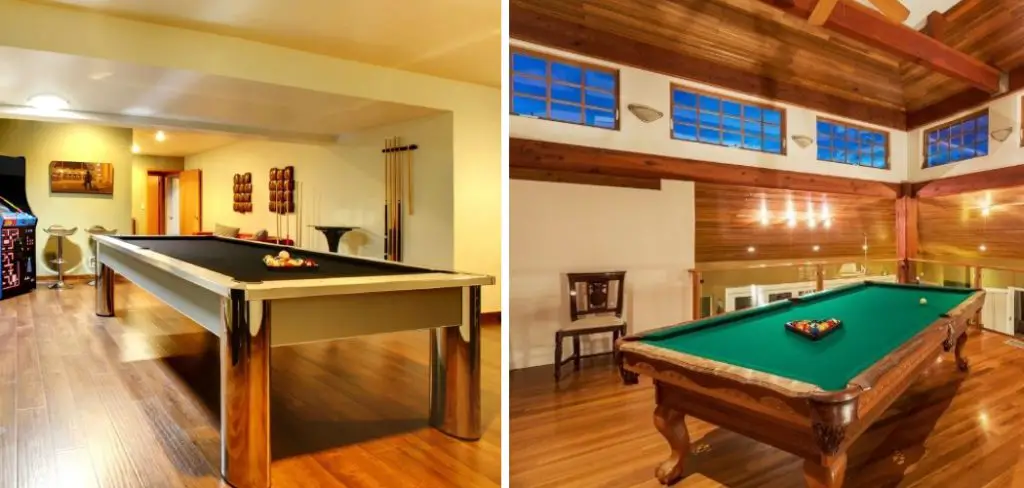
Whether you’re downsizing, moving, or renovating, the process of storing a pool table involves disassembly, packaging, and appropriate storage conditions. In this article, we’ll guide you through the essential steps and precautions on how to store a pool table effectively, ensuring its longevity and maintaining its playability when you’re ready to set it up again.
The Importance of Proper Pool Table Storage
When it comes to owning a pool table, proper storage is essential. Whether you are moving or simply need to store your pool table temporarily, taking the necessary precautions can ensure that your investment remains in good condition for years to come.
Without proper storage, a pool table can become damaged in numerous ways. For starters, the felt covering on the playing surface is delicate and prone to tears, stains, and other damage. If not stored correctly, the weight of the table can cause the felt to stretch or sag, making it difficult to play on.
In addition to the felt, the slate bed of a pool table is also susceptible to damage if not stored properly. The slate pieces must be kept level and protected from any potential impact or pressure. Otherwise, small cracks or chips can occur, affecting the overall playability of the table.
Aside from potential damage to the playing surface and frame, improper storage can also result in structural issues for the pool table. For instance, if stored in an area with fluctuating temperatures or high humidity levels, wood components can warp or become moldy.
10 Methods How to Store a Pool Table
1. Cover the Pool Table with a Fitted Cloth
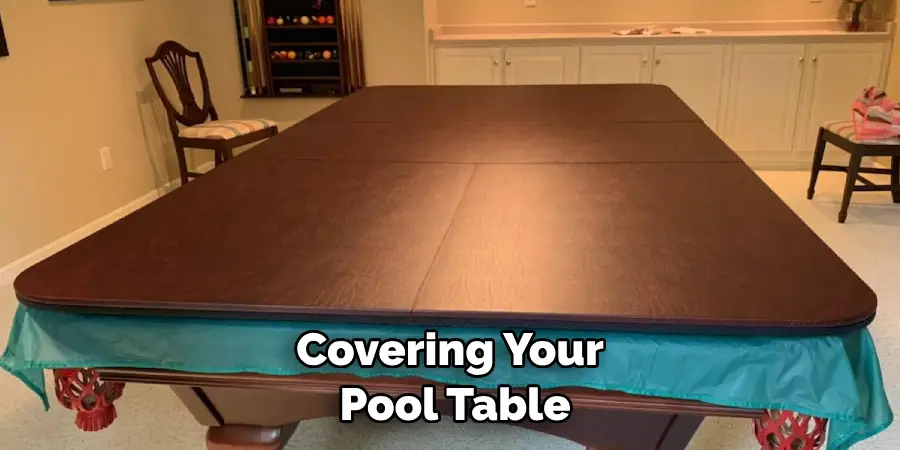
Covering your pool table with a fitted cloth is one of the best ways to protect it from dust and dirt. It also helps to keep the felt in good condition and prevents any liquid spills from damaging the wood. Make sure that you choose a cloth that is designed specifically for pool tables, as these will fit better than generic fabrics. Additionally, you should make sure that you use a breathable fabric such as cotton or linen to ensure that moisture does not become trapped underneath the cover.
2. Use Coasters When Placing Drinks on the Table
Using coasters when placing drinks on your pool table can help to prevent water rings from forming on the wood surface. You can purchase protective coasters specifically designed for pool tables, or you can use regular coasters lined with a soft fabric such as felt or leather. This will help to absorb any moisture before it has a chance to damage the wood surface of your pool table.
3. Keep Sunlight Away From Your Pool Table
Sunlight can cause fading and discoloration of your pool table’s finish over time, so it’s important to keep it out of direct sunlight whenever possible. If you must place your pool table near a window, make sure that you use curtains or blinds to block out most of the light during peak hours of daylight exposure. Additionally, if your pool table is located outdoors, consider investing in an outdoor cover that will provide additional protection against UV rays and other elements.
4. Clean Your Pool Table Regularly
Regular cleaning is essential for keeping your pool table in good condition and preventing dirt and dust from building up on its surface. Start by vacuuming away any loose dirt or debris using an upholstery attachment on your vacuum cleaner (or a handheld vacuum).
Next, wipe down all surfaces with a damp cloth using mild soap and warm water. Finally, dry off all surfaces thoroughly with another clean cloth before replacing any accessories, such as balls or cues, onto the tabletop.
5. Store Your Pool Table Accessories Properly
It’s important to store all of your accessories properly when they are not in use in order to keep them in good condition and prevent them from becoming damaged over time. Cues should be stored upright in cue racks rather than being left lying flat on top of each other, while balls should be kept inside their original bags or boxes when not being used for play. Additionally, chalk should be stored away from direct sunlight as this can cause it to deteriorate more quickly over time.
6. Place Protective Pads Underneath Your Pool Table Legs
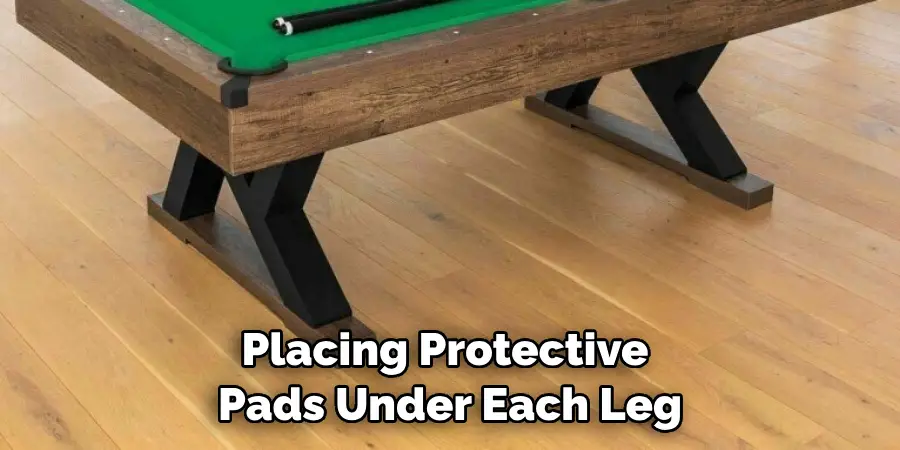
Placing protective pads under each leg of your pool table is an easy way to reduce noise levels while playing and protect both hardwood floors and carpets from scratches and dents caused by movement during playtime. You can purchase protective pads specifically designed for this purpose at most sporting goods stores or online retailers, or you could even make your own using pieces of foam rubber cut into circular shapes slightly larger than each leg base diameter size.
7. Move Your Pool Table Carefully When Necessary
If you ever need to move your pool table from one location to another (e.g., when redecorating), make sure that you do so carefully in order to avoid causing any damage to its frame or legs during transit time. To do this safely, enlist at least two people who are strong enough to lift up one end at once, then proceed slowly while carrying it through doorways, hallways, staircases, etc. Be sure to also take extra precautions when moving around corners, as sudden turns may cause bumps, which could damage certain parts of the frame.
8. Level Out Your Pool Table Regularly
Pool tables need to be leveled regularly in order for them to play correctly – otherwise, shots may go off course due to incorrect angles created by uneven surfaces. To level out your own table at home, start by checking all four legs first – if they’re uneven, then try adjusting each leg individually until they become level again.
If necessary, place shims underneath certain legs until they reach the desired heights. Once done, check again using the leveler tool to ensure everything remains even across the board before starting the next game session.
9. Check for Warping Periodically
Warping occurs when certain parts warp due to changes in temperature and humidity levels – this causes slants that affect the accuracy of shots taken during gameplay. To prevent warping from happening too often, make sure to keep room temperature consistent throughout the year and replace felt periodically (usually every 6-12 months) depending on how often used/cared for properly, etc. Additionally, check the rail bolts periodically to make sure they are still tight and secure.
10. Disassemble A Pool Table If Not In Use For Extended Periods
If you’re planning on not using your pool table for an extended period (e.g., during a move or long-term storage), consider disassembling it completely in order to reduce storage space needed and prevent any possible damage while being moved. To do this, start by unscrewing the bolts holding each rail onto the table’s frame, then proceed to remove all rails and pockets from their respective places before taking off the felt covering.
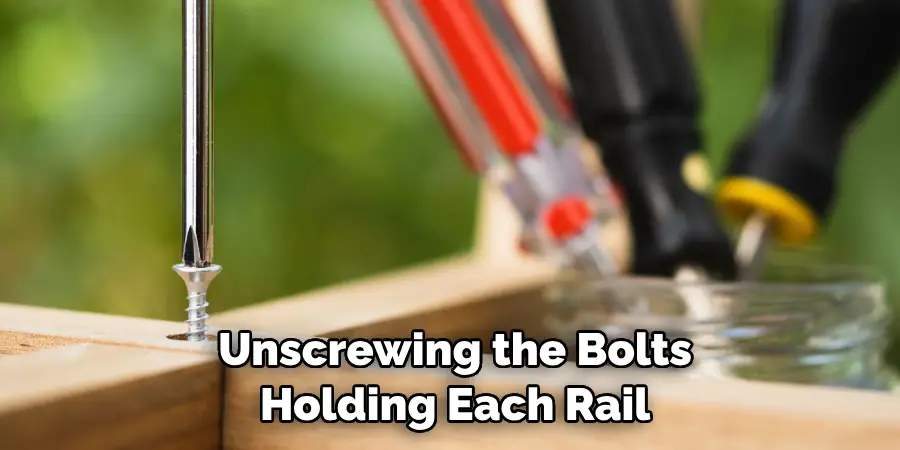
Safety Precautions for Storing a Pool Table
When storing a pool table, there are a number of safety precautions that you should always keep in mind. These precautions will not only help protect the quality and longevity of your pool table, but also ensure your own personal safety during the storage process.
First and foremost, it is important to remember that pool tables are heavy and bulky pieces of furniture. As such, it is crucial to have at least two strong individuals assisting with the storage process. Attempting to move or store a pool table on your own can result in serious injury.
In addition, make sure to properly disassemble the pool table before storing it. This includes removing the felt and pockets, as well as unscrewing and labeling each piece of the frame and legs. Be sure to also carefully wrap and protect each piece to prevent damage during the storage process.
When it comes to actually storing the pool table, make sure to choose a dry, climate-controlled area. Extreme temperatures and humidity can cause warping or cracking of the wood in your pool table. It is recommended to store the disassembled pieces flat or on their sides, rather than upright.
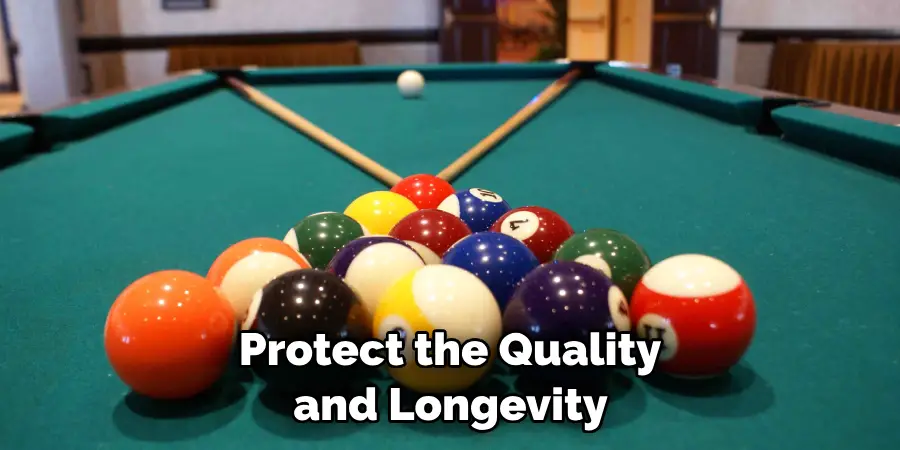
Conclusion
In conclusion, when it comes to storing a pool table properly, you need to disassemble it and wrap the pieces with durable plastic before placing them in storage. Additionally, insulate your pool table with foam pads to keep it safe from climate-related issues and store the pieces of the pool table on end wherever possible.
Doing these steps will keep your pool table in good condition if you ever decide to get it out again. Just as importantly, addressing any unlevelness or warping before attempting to reassemble the piece can also help a lot.
And lastly, remember that having an experienced billiard service professional come measure and level your table is always an option that can save future hassle and preserve its longevity for years of enjoyment. So make sure you take all of these tips into account when figuring out how to store a pool table in order to protect this significant investment.

